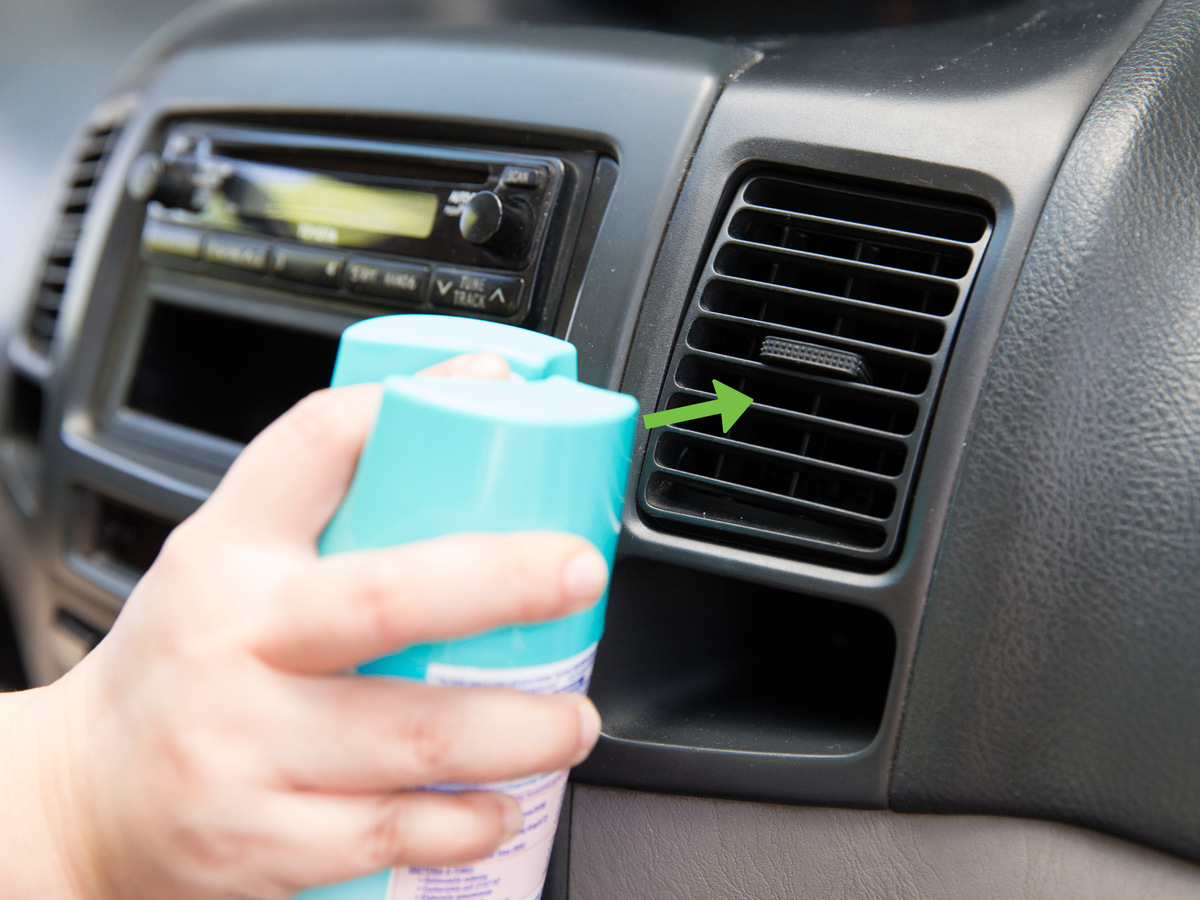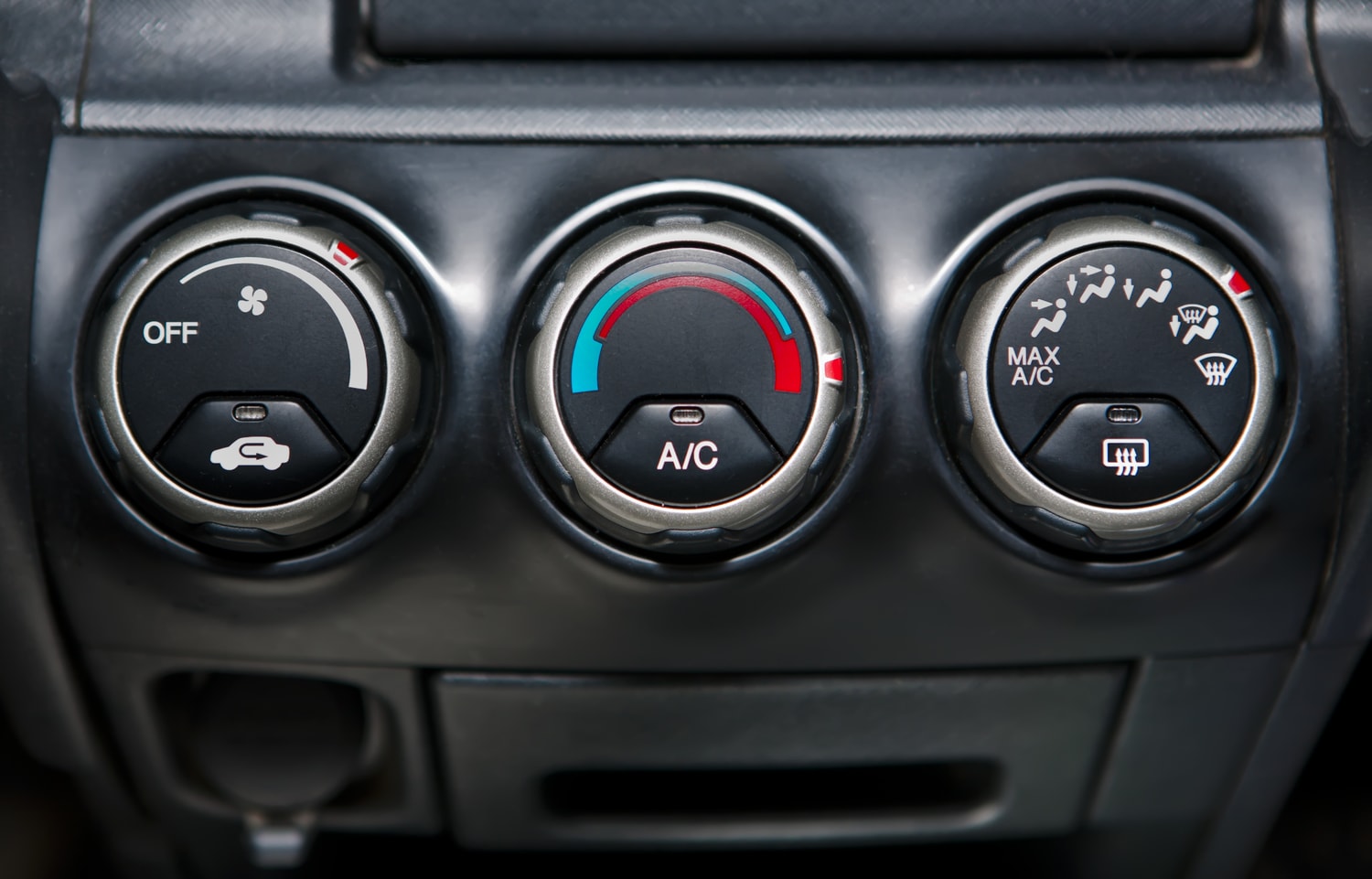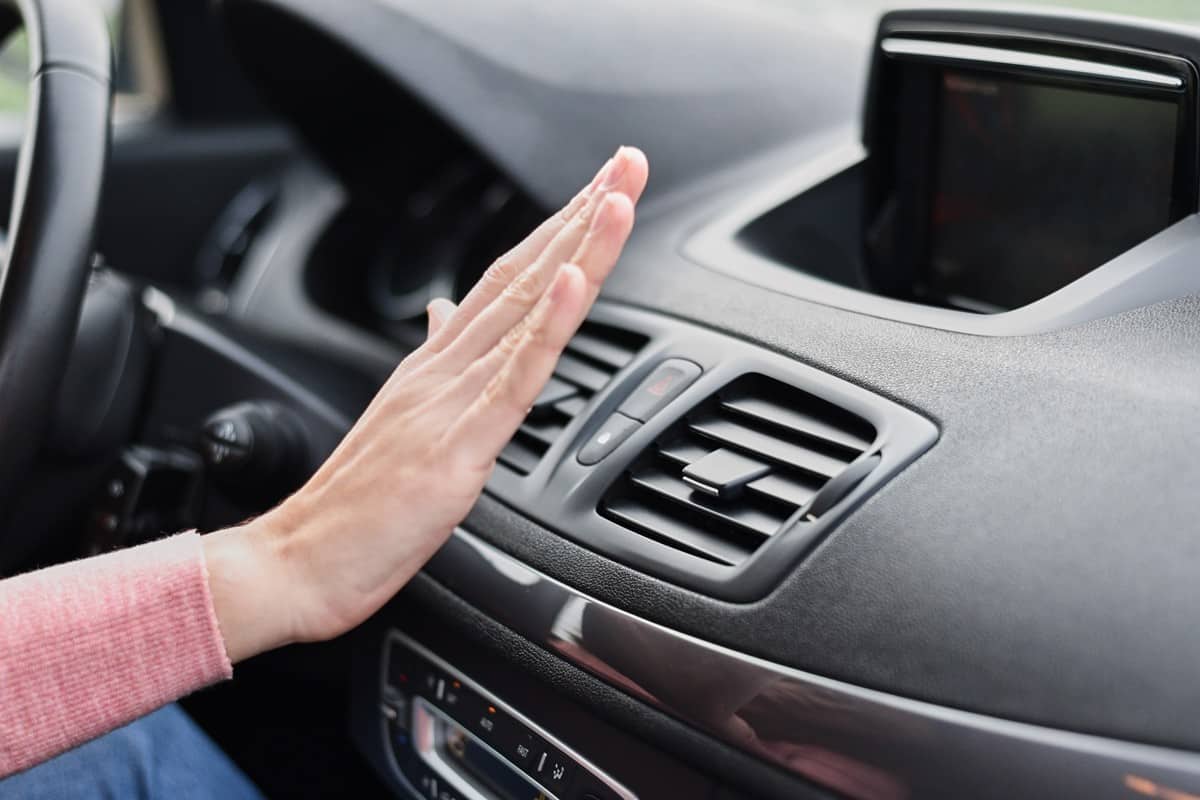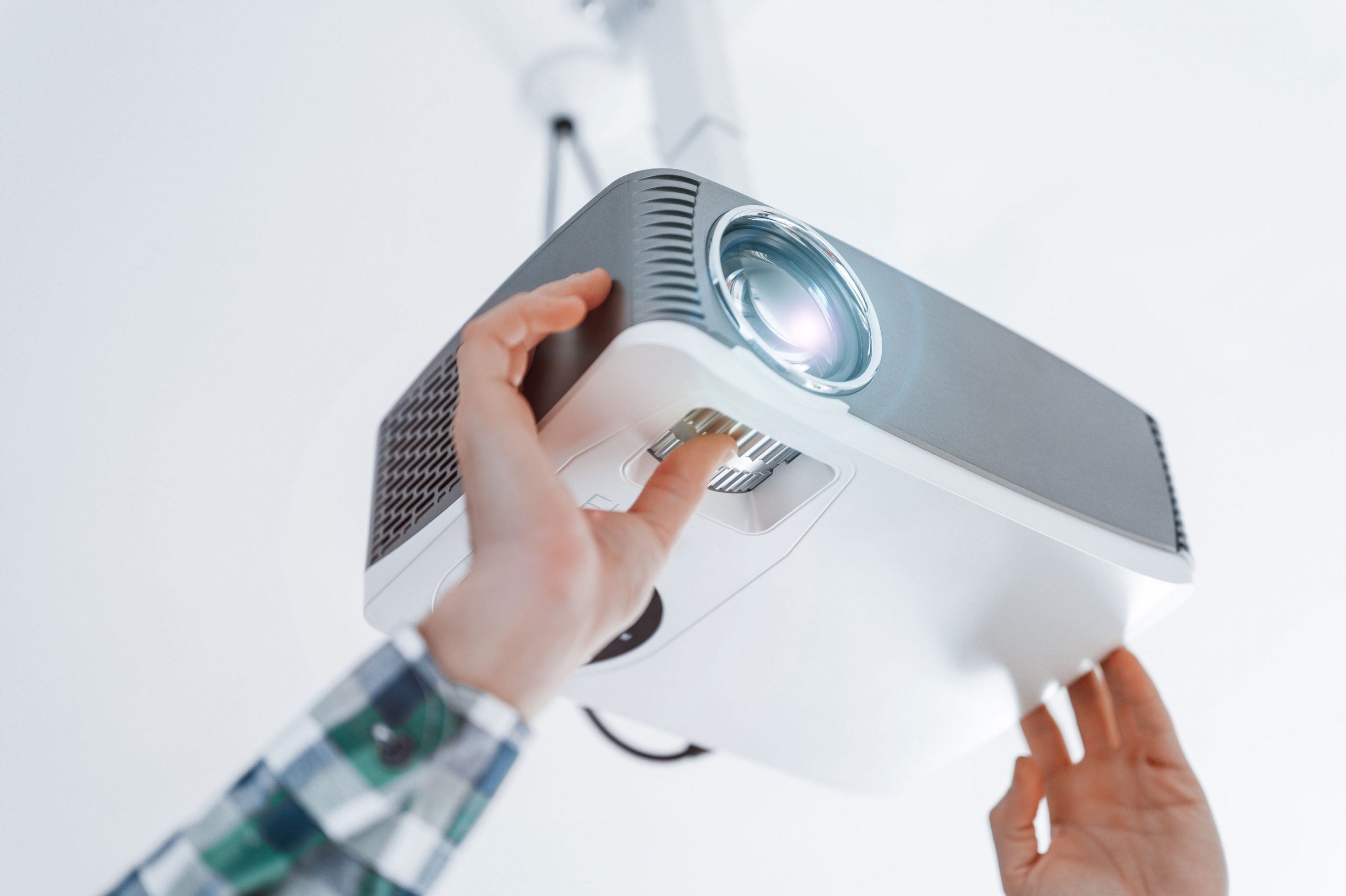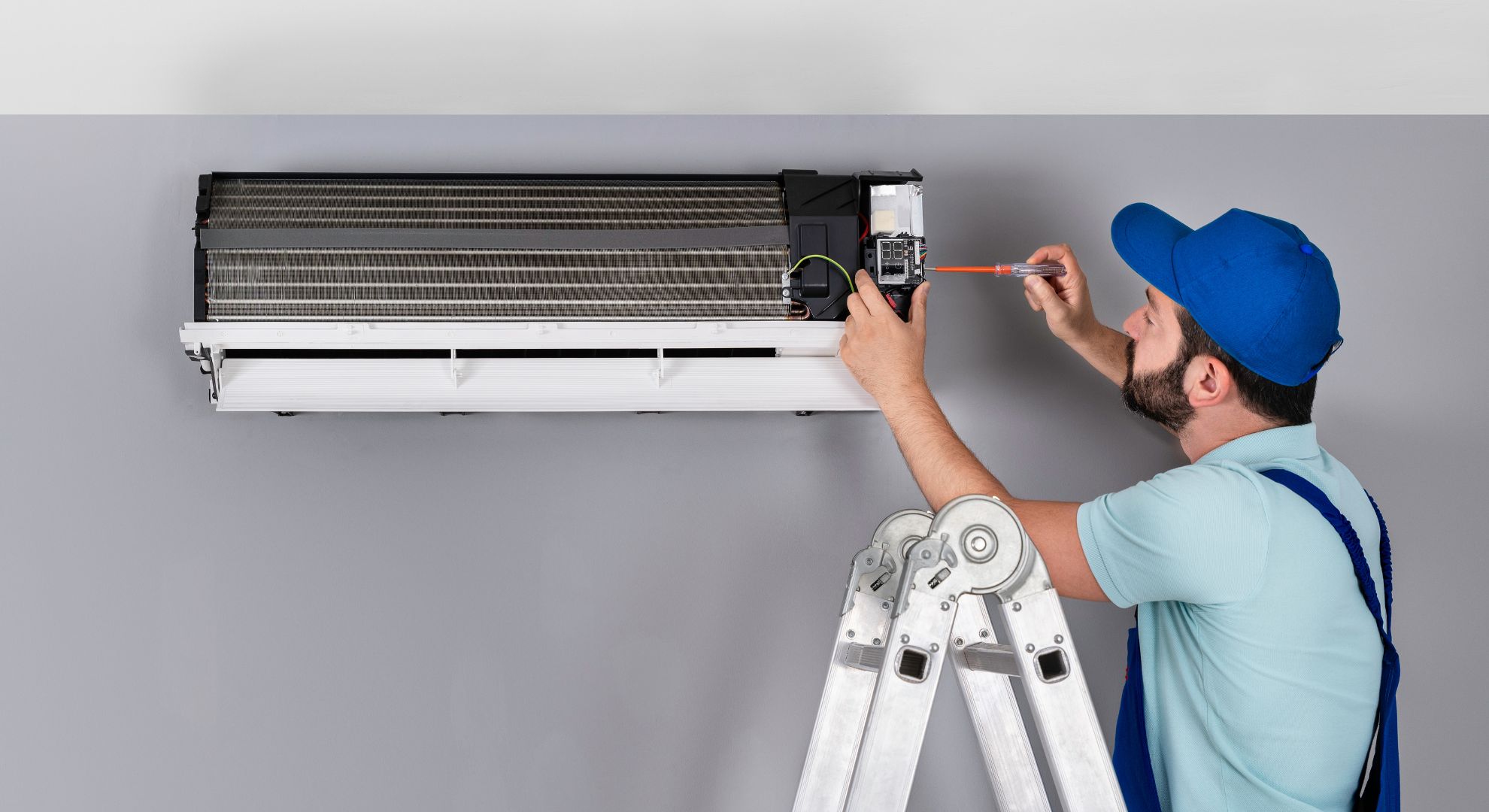Home>Home Maintenance>Why Is My Car Air Conditioning Not Working
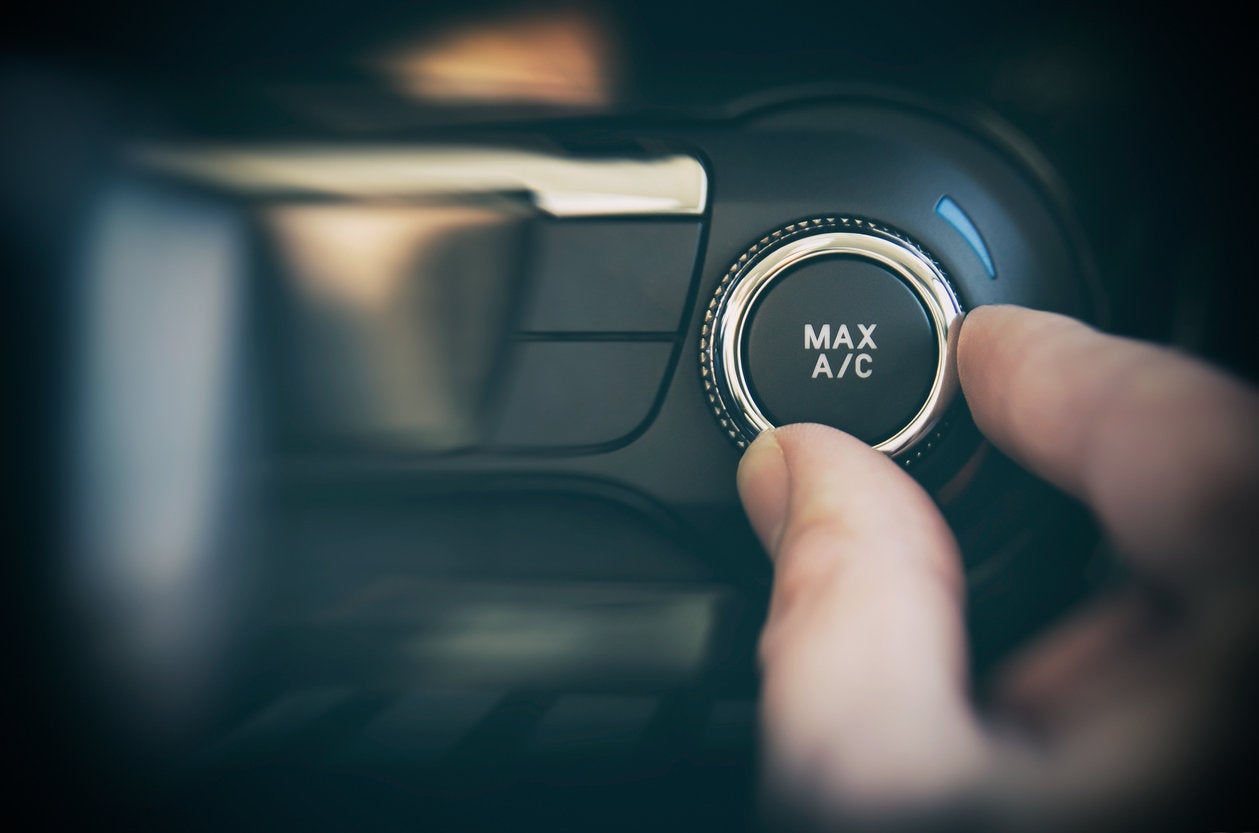

Home Maintenance
Why Is My Car Air Conditioning Not Working
Modified: March 6, 2024
If your car air conditioning is not working, it may be time for a home maintenance check. Discover the reasons and solutions here.
(Many of the links in this article redirect to a specific reviewed product. Your purchase of these products through affiliate links helps to generate commission for Storables.com, at no extra cost. Learn more)
Common Reasons for Car Air Conditioning Not Working
There’s nothing worse than driving on a hot summer day and realizing that your car’s air conditioning system is not blowing cold air. It can quickly turn your pleasant drive into an uncomfortable and sweaty experience. If you’re faced with this issue, it’s important to identify the cause of the problem so you can get it fixed. Here are some common reasons why your car’s air conditioning might not be working:
- Lack of Refrigerant: One of the most common reasons for a malfunctioning AC system is a lack of refrigerant. Over time, refrigerant can leak and reduce the effectiveness of the system. When the refrigerant level is low, the AC won’t be able to generate cold air.
- Faulty Compressor: The compressor is responsible for compressing and circulating the refrigerant through the AC system. If the compressor is faulty, it won’t be able to perform its function, resulting in warm air blowing from the vents.
- Leaking AC System: A leak in the AC system can cause the refrigerant to escape, leading to a loss of cooling capability. Common areas where leaks occur include the hoses, fittings, or the AC condenser.
- Electrical Issues: Electrical problems, such as a blown fuse or a malfunctioning relay, can disrupt the operation of the AC system. These issues can prevent the compressor from receiving the necessary power, resulting in no cold air.
- Clogged or Blocked Condenser: The AC condenser plays a crucial role in releasing heat from the refrigerant. If it becomes clogged with dirt, debris, or bugs, it can obstruct the heat exchange process and prevent the AC from cooling properly.
- Malfunctioning Blower Motor: The blower motor is responsible for circulating the cold air from the AC system into the cabin. If the motor is malfunctioning or not working at all, it can result in no airflow or weak airflow.
- Faulty Expansion Valve or Orifice Tube: The expansion valve or orifice tube regulates the flow of refrigerant into the evaporator. If they are clogged or malfunctioning, the refrigerant won’t be able to enter the evaporator and cool the air.
- Issues with Temperature Control System: Problems with the temperature control system, such as a faulty temperature control switch or a malfunctioning thermostat, can prevent the AC system from cooling the air to the desired temperature.
- Broken or Damaged AC Components: Any broken or damaged components within the AC system, such as a cracked hose or a faulty pressure switch, can disrupt the smooth operation of the system and lead to a lack of cold air.
- Airflow Restrictions in the Ventilation System: Blockages or restrictions in the ventilation system, such as a clogged cabin air filter or a stuck air blend door, can impede the airflow and prevent the AC from working effectively.
- Problems with the AC Control Panel: Issues with the AC control panel, such as a malfunctioning control switch or a faulty display, can prevent the proper operation of the AC system and result in no cold air.
- Faulty Sensors or Switches: Various sensors and switches within the AC system, such as the ambient temperature sensor or the pressure switch, can malfunction and disrupt the cooling process.
- Problems with the AC Evaporator: The AC evaporator is responsible for removing heat from the air. If it becomes clogged or malfunctioning, it won’t be able to absorb the heat and cool the air effectively.
- Malfunctioning AC Clutch: The AC clutch engages and disengages the compressor as needed. If the clutch is faulty or damaged, the compressor won’t function properly, resulting in a lack of cold air.
- Issues with the Drive Belt or Serpentine Belt: The drive belt or serpentine belt is responsible for powering the various components of the AC system. If the belt is worn, loose, or broken, it won’t be able to transfer power properly, leading to AC problems.
If your car’s air conditioning is not working, it’s essential to have it inspected and repaired by a qualified mechanic. They will be able to diagnose the exact cause of the issue and perform the necessary repairs to get your AC system blowing cold air again. Remember, regular maintenance and servicing can help prevent these issues and keep your car’s air conditioning running smoothly.
Common Reasons for Car Air Conditioning Not Working
1. Lack of Refrigerant
One of the most common reasons for a car’s air conditioning system not working is a lack of refrigerant. Refrigerant is the substance responsible for cooling the air inside the AC system. Over time, the refrigerant level can deplete due to leaks or evaporation, leading to a reduced cooling effect or no cooling at all.
Refrigerant leaks can occur in various parts of the AC system, such as the hoses, connections, or even the AC condenser. These leaks can be caused by factors like wear and tear, corrosion, or loose fittings. When the refrigerant level becomes too low, the AC system won’t be able to cool the air effectively, resulting in warm or hot air blowing from the vents.
There are several signs that indicate a lack of refrigerant in the AC system. One of the most obvious signs is when the air conditioning doesn’t blow cold air, or the cooling effect is minimal. You may also notice that the AC compressor is constantly cycling on and off, as it struggles to maintain the pressure required to cool the air.
If you suspect a lack of refrigerant is the culprit behind your AC issues, it’s crucial to have it checked and addressed by a qualified mechanic. They will be able to locate and repair any refrigerant leaks, as well as recharge the AC system with the appropriate amount of refrigerant.
Regular maintenance can help prevent refrigerant leaks and ensure that your AC system functions optimally. It’s important to have your AC system inspected and serviced regularly to detect and address any potential issues before they escalate. Additionally, if you notice any signs of refrigerant leakage, such as oily residue near the AC components or a hissing sound, it’s essential to have it checked right away.
Remember, handling refrigerant requires specialized knowledge and equipment, so it’s best to leave the inspection and repair of your AC system to trained professionals. They have the expertise to diagnose and fix any refrigerant-related issues and get your car’s air conditioning working properly again.
Common Reasons for Car Air Conditioning Not Working
2. Faulty Compressor
The compressor is a vital component of the car’s air conditioning system. It plays a crucial role in compressing and circulating the refrigerant, which is responsible for cooling the air inside the AC system. If the compressor is faulty, it can significantly impact the performance of the AC system.
There are several reasons why a compressor may fail or become faulty. One common issue is compressor clutch failure. The compressor clutch is responsible for engaging and disengaging the compressor as needed. If the clutch fails, the compressor won’t be able to build up the necessary pressure to cool the air. As a result, warm air may blow from the vents or the AC system may not produce any cool air at all.
A faulty compressor can also be caused by other issues, such as mechanical damage, worn-out internal components, or electrical problems. Excessive wear and tear, as well as the buildup of debris or contaminants in the compressor, can lead to its failure over time. Electrical issues, such as a blown fuse or a malfunctioning relay, can prevent the compressor from receiving power and operating properly.
Identifying a faulty compressor can be tricky, as the symptoms may vary. In addition to a lack of cold air, you may notice unusual noises coming from the AC system, such as grinding or squealing sounds. The AC system may also intermittently work or cycle on and off frequently. If you suspect a faulty compressor, it’s essential to have it inspected by a professional technician who can diagnose the issue and recommend the appropriate repairs.
Repairing or replacing a faulty compressor requires specialized knowledge and equipment, making it a complex task best left to professionals. They will be able to determine the exact cause of the compressor failure and perform the necessary repairs or replacements to restore the proper functioning of the AC system.
Regular maintenance and servicing of the AC system can help prevent compressor issues. It’s important to have the AC system inspected regularly, especially before the summer months, to ensure that all components, including the compressor, are in good working condition. By addressing any potential problems early on, you can avoid costly repairs and enjoy cool air during your drives.
Common Reasons for Car Air Conditioning Not Working
3. Leaking AC System
A leaking AC system is a common cause of air conditioning problems in cars. When there is a leak in the system, the refrigerant, which is responsible for cooling the air, can escape, resulting in a loss of cooling capability.
There are several potential causes for an AC system to develop leaks. Over time, the rubber seals and O-rings that connect the AC system components can deteriorate or become damaged, allowing refrigerant to leak out. Additionally, corrosion or physical damage to the AC condenser, hoses, or fittings can also result in leaks.
One of the signs of a leaking AC system is reduced cooling or a lack of cold air blowing from the vents. You may notice that the air conditioning system takes longer to cool the cabin or that it’s unable to reach the desired temperature. Another indicator of a leak is an oily residue around the AC system components or a distinct hissing sound when the AC is running.
It’s important to address a leaking AC system promptly, as a lack of refrigerant can not only affect the comfort of your driving experience but also lead to further damage to the AC components. When the refrigerant level is low, the AC compressor may be forced to work harder, potentially causing it to overheat and fail.
If you suspect a leaking AC system, it’s best to have it inspected and repaired by a qualified technician. They will be able to identify the source of the leak and determine the appropriate course of action. In some cases, the repair may involve replacing faulty seals, O-rings, or other components. If the AC condenser is damaged, it may need to be replaced entirely.
Prevention is key when it comes to AC system leaks. Regular maintenance and servicing can help identify and address any potential issues early on, preventing leaks from occurring. It’s recommended to have your AC system inspected at least once a year to ensure it is in proper working condition and to detect any signs of leaks or other problems.
Remember, dealing with AC system refrigerant requires specialized training and equipment, so it’s crucial to leave the inspection and repair of a leaking AC system to professionals. They have the expertise to handle refrigerant safely and effectively, ensuring that your AC system functions optimally and provides cool air during those hot summer days.
Common Reasons for Car Air Conditioning Not Working
4. Electrical Issues
Electrical issues can be a major cause of a malfunctioning car air conditioning system. The electrical components of the AC system are responsible for powering and controlling the various functions, and any problems in this area can disrupt the system’s operation.
One of the common electrical issues that can affect the AC system is a blown fuse. Fuses are designed to protect electrical circuits from damage caused by excessive current. If a fuse related to the AC system blows, it can cause the system to stop working. It’s important to check the fuses and replace any blown ones with the appropriate rating.
Another potential electrical issue is a malfunctioning relay. Relays are switches that control the flow of electricity to different components of the AC system. If a relay becomes faulty, it may not properly engage or disengage, affecting the operation of the AC system. A professional technician can test and replace any faulty relays as needed.
Faulty electrical connections can also cause AC problems. Loose or corroded connections can disrupt the flow of electricity, leading to intermittent operation or no operation at all. It’s worth checking the connections associated with the AC system and ensuring they are clean and properly secured.
Sometimes, the AC system’s control panel can develop electrical issues. For example, a malfunctioning control switch or a faulty display can prevent the system from functioning correctly. In such cases, repairing or replacing the faulty control panel components may be necessary to restore the proper operation of the AC system.
Diagnosing and resolving electrical issues in the AC system can be complex, as it requires expertise in automotive electrical systems. It’s best to consult a qualified technician who can use specialized diagnostic tools to identify and address the electrical issues affecting your car’s air conditioning.
Regular maintenance and inspections can help prevent electrical issues from occurring in the first place. It’s important to have the electrical components of the AC system checked during routine servicing to ensure they are in good working order. Additionally, keeping the electrical connections clean and protected can help minimize the risk of issues arising due to corrosion or loose connections.
When it comes to electrical issues with the AC system, it’s best to leave the diagnosis and repair to professionals who have the knowledge and experience to handle these intricate systems. They can ensure that the electrical components are functioning correctly and get your car’s air conditioning up and running smoothly once again.
Common Reasons for Car Air Conditioning Not Working
5. Clogged or Blocked Condenser
The condenser is a vital component of the car’s air conditioning system. Its primary function is to release heat from the refrigerant, allowing it to cool down and circulate back into the system. However, over time, the condenser can become clogged or blocked, impacting the efficiency and performance of the AC system.
One common cause of a clogged or blocked condenser is the buildup of dirt, debris, and bugs on its external surface. As your vehicle travels, these particles can accumulate on the condenser fins, restricting airflow and inhibiting heat transfer. When the condenser is unable to release heat effectively, it can result in a lack of cooling or warm air blowing from the vents.
Another factor that can lead to a clogged or blocked condenser is damage to the fins. The fins of the condenser are delicate and can be easily bent or damaged by road debris or improper cleaning techniques. Even minor damage to the fins can disrupt the airflow, reducing the condenser’s ability to cool the refrigerant efficiently.
If you suspect a clogged or blocked condenser is the cause of your AC system’s poor performance, it’s crucial to address the issue promptly. First, visually inspect the condenser for any visible signs of debris or damage. If you notice a buildup of dirt or debris, you can use a gentle stream of water or compressed air to clean the fins. Be careful not to apply excessive force as it may cause further damage.
In some cases, a thorough cleaning may not be enough to restore the condenser’s functionality. If the fins are severely damaged or the blockage is stubborn, it’s best to consult a professional technician. They can perform a more comprehensive cleaning or, if necessary, recommend replacing the condenser to ensure optimal cooling performance.
Prevention is key when it comes to a clogged or blocked condenser. Regular maintenance, such as cleaning the condenser fins during routine servicing, can help prevent the buildup of dirt and debris. Additionally, parking your vehicle away from dusty or debris-laden areas can minimize the risk of clogging the condenser.
It’s important to note that handling the delicate fins of the condenser requires care and caution. If you’re unsure about cleaning or suspect significant damage, it’s best to leave the task to professionals. They have the tools and expertise to clean or replace the condenser correctly, ensuring optimal cooling performance for your car’s air conditioning system.
Common Reasons for Car Air Conditioning Not Working
6. Malfunctioning Blower Motor
The blower motor plays a crucial role in the car’s air conditioning system by circulating the cool air from the system into the cabin. When the blower motor malfunctions, it can result in no airflow or weak airflow, leading to an ineffective cooling experience.
There are several potential causes for a malfunctioning blower motor. One common issue is a faulty motor resistor. The motor resistor controls the speed of the blower motor, allowing you to adjust the airflow. If the resistor fails, the blower motor may not function at all or only operate at one speed, regardless of the setting.
Another possible cause is a worn-out or seized blower motor. Over time, the internal components of the motor can wear out or become damaged, affecting its ability to function properly. Additionally, debris or dirt accumulation in the blower motor assembly can cause it to seize, resulting in no airflow.
Electrical issues can also contribute to a malfunctioning blower motor. Problems such as a blown fuse, a faulty relay, or loose wiring connections can disrupt the motor’s operation. If the blower motor is not receiving the necessary electrical power, it may fail to function or only work intermittently.
When the blower motor malfunctions, you may notice a lack of airflow from the vents, even when the AC system is turned on. In some cases, the motor may produce strange noises, such as squealing or grinding sounds, indicating internal damage.
If you suspect a malfunctioning blower motor in your car’s air conditioning system, it’s essential to have it inspected by a qualified technician. They can diagnose the issue and recommend the appropriate repairs or replacements. In some cases, simple repairs, such as replacing a faulty resistor or clearing debris from the motor assembly, may be sufficient. However, if the motor is severely damaged or seized, it may require replacement.
To prevent blower motor issues, regular maintenance is key. It’s important to have the AC system inspected and serviced regularly, including checking the blower motor and ensuring it is clean and in good working condition. Keeping the cabin air filters clean and replacing them as recommended can also help prevent debris from entering the blower motor assembly.
Remember, handling electrical components within the AC system requires expertise. It’s best to leave the inspection and repair of a malfunctioning blower motor to professionals. They have the knowledge and skills to diagnose and address the issue effectively, ensuring proper airflow and cooling capability in your car’s air conditioning system.
Common Reasons for Car Air Conditioning Not Working
7. Faulty Expansion Valve or Orifice Tube
The expansion valve or orifice tube is a crucial component in the car’s air conditioning system, responsible for regulating the flow of refrigerant into the evaporator. If the expansion valve or orifice tube becomes faulty or clogged, it can significantly impact the cooling performance of the AC system.
The expansion valve works by controlling the amount of refrigerant that enters the evaporator. This process allows the refrigerant to expand and cool down, ultimately producing cold air. However, over time, the expansion valve can develop issues such as clogging or malfunctioning. When this happens, the refrigerant flow is disrupted, leading to inefficient cooling or no cooling at all.
Similarly, the orifice tube serves a similar function as the expansion valve. It is a fixed-size tube that regulates the refrigerant flow into the evaporator. If the orifice tube becomes clogged or damaged, it can hinder the flow of refrigerant and prevent proper cooling.
One of the signs of a faulty expansion valve or orifice tube is a lack of cold air from the air conditioning system. You may notice that the AC blows only warm air, or it takes longer to cool down the cabin. Additionally, the AC system may experience inconsistencies in cooling, with intermittent periods of cold air followed by warm air.
If you suspect a faulty expansion valve or orifice tube, it’s essential to have the issue diagnosed and repaired by a professional technician. They will be able to inspect the components and determine whether they need cleaning, repairs, or replacement.
Preventing issues with the expansion valve or orifice tube can be challenging, as some failures may occur due to normal wear and tear. However, regular maintenance is still recommended to ensure the AC system is in good working condition. Having the system checked by a professional on a routine basis can help detect any potential problems before they worsen.
If your car’s AC system is experiencing issues, including a lack of cold air, it’s crucial to have it checked as soon as possible. Ignoring the problem can lead to further damage to the AC system and potentially more expensive repairs down the line.
Remember, handling the components of the AC system requires specialized knowledge and equipment. It’s best to trust the repair and maintenance of the expansion valve or orifice tube to qualified technicians who have the expertise to handle the intricate workings of your car’s air conditioning system.
Common Reasons for Car Air Conditioning Not Working
8. Issues with Temperature Control System
The temperature control system in your car’s air conditioning system is responsible for regulating the temperature of the air coming from the vents. If there are issues with this system, it can affect the cooling performance and impact your comfort while driving.
One common issue with the temperature control system is a faulty temperature control switch. This switch allows you to adjust the desired temperature by controlling the amount of cold air mixed with warm air. If the switch malfunctions, it may not accurately regulate the temperature, resulting in inconsistent cooling or incorrect temperature output.
Another potential problem is a malfunctioning thermostat. The thermostat monitors the temperature of the evaporator and controls the operation of the compressor. If the thermostat is not functioning properly, it may not accurately detect the temperature, leading to improper compressor operation and inadequate cooling.
Additionally, problems with the blend door or actuator can impact the temperature control system. The blend door directs the airflow between the heater core and the evaporator, allowing you to switch between hot and cold air. If the blend door becomes stuck or the actuator fails, it can result in a lack of temperature control and an inability to adjust the air conditioning output to your desired temperature.
When the temperature control system is not functioning correctly, you may experience issues such as the air conditioning blowing warm air even when set to a cool temperature or the inability to reach the desired level of cooling comfort. In some cases, you may notice that the air conditioning output is inconsistent and fluctuates between hot and cold air.
If you suspect issues with the temperature control system, it’s advisable to have it inspected by a qualified technician. They will be able to diagnose the problem and recommend the appropriate repairs or replacements needed to restore proper temperature control.
Regular maintenance of the temperature control system is essential to prevent issues. It’s recommended to have the AC system inspected during routine servicing to ensure that all temperature control components are in good working condition. Promptly addressing any signs of malfunction or inconsistency in temperature control can prevent further damage to the system and ensure your comfort while driving.
Remember, the temperature control system in your car’s air conditioning system is a complex system that requires expertise to diagnose and fix. It’s best to rely on experienced professionals who can accurately identify the issue and provide the necessary repairs or replacements to restore proper temperature control in your vehicle.
Common Reasons for Car Air Conditioning Not Working
9. Broken or Damaged AC Components
The air conditioning system in your car is composed of various components that work together to provide cool and comfortable air. If any of these components become broken or damaged, it can lead to a malfunctioning AC system and a lack of cooling efficiency.
One of the common AC components that can break or become damaged is the AC compressor. The compressor is responsible for compressing the refrigerant and circulating it through the system. If the compressor has internal damage or mechanical failure, it may not be able to perform its function properly, resulting in poor cooling or no cooling at all.
Another critical component is the AC condenser. The condenser helps release heat from the refrigerant, allowing it to cool down and circulate back into the system. If the condenser becomes cracked or damaged, it can hinder the heat exchange process, leading to inefficient cooling performance.
Other AC components that can experience damage or breakage include the AC hoses, fittings, and seals. Over time, these components can deteriorate, leading to refrigerant leaks or system malfunction. Additionally, the AC evaporator, which cools the air as it passes through, can also develop issues such as leaks or corrosion, affecting its cooling capability.
When AC components are broken or damaged, you may experience symptoms such as a lack of cold air, weak airflow, strange noises coming from the AC system, or refrigerant leakage. It’s crucial to address these issues promptly to prevent further damage to the AC system and ensure your comfort while driving.
If you suspect that your AC components are broken or damaged, it’s recommended to have them inspected by a qualified technician. They will be able to diagnose the specific component causing the issue and recommend the necessary repairs or replacements. It’s important to address broken or damaged AC components as soon as possible to prevent further damage to the system and avoid more extensive and costly repairs.
Regular maintenance and servicing can help prevent issues with AC components. Having the AC system checked annually or as recommended by your vehicle’s manufacturer can help detect any signs of damage or wear and tear. Proper care and maintenance, such as keeping the system clean and avoiding harsh chemicals, can also prolong the lifespan of the AC components and enhance their performance.
Remember, handling and repairing AC components require specialized knowledge and tools. It’s best to entrust the inspection and repair of broken or damaged AC components to trained professionals who have the expertise to handle these intricate systems effectively.
Common Reasons for Car Air Conditioning Not Working
10. Airflow Restrictions in the Ventilation System
The ventilation system in your car plays a crucial role in delivering the cold air from the air conditioning system into the cabin. When there are restrictions in the airflow, it can significantly impact the cooling efficiency and overall performance of your car’s air conditioning system.
One common cause of airflow restrictions is a clogged or dirty cabin air filter. The cabin air filter is designed to trap dust, pollen, and other contaminants from entering the cabin through the ventilation system. Over time, the filter can become clogged with debris, reducing airflow and impeding the cooling process. Regularly replacing the cabin air filter according to the manufacturer’s guidelines can help maintain proper airflow and prevent restrictions.
Another potential culprit is a blockage in the air ducts or vents. Objects such as leaves, papers, or even pets can find their way into the ventilation system and block the airflow. A visual inspection of the vents and ducts can help identify and remove any obstructions, ensuring that the air can flow freely into the cabin.
Restrictions in the ventilation system can also be caused by damaged or collapsed ducts. Over time, the ductwork in your car can wear out or become damaged, leading to airflow restrictions. If the ducts are crushed or disconnected, it can prevent the cool air from reaching the vents, resulting in inadequate cooling. Repairing or replacing the damaged ducts can help restore proper airflow.
In some cases, airflow restrictions can also occur due to a malfunctioning blower motor or a broken fan. The blower motor is responsible for pushing the cool air through the ducts and into the cabin. If the motor malfunctions or the fan blades are damaged, it can hinder the airflow. A professional technician can inspect and repair or replace these components if necessary.
If you notice reduced airflow or inadequate cooling from your car’s air conditioning system, it’s crucial to have the ventilation system inspected. A qualified technician can identify any restrictions in the airflow and perform the necessary repairs or maintenance to restore optimal performance.
Preventing airflow restrictions in the ventilation system involves regular maintenance and care. It’s important to keep the cabin air filter clean and replace it as recommended by the manufacturer. Additionally, being mindful of what enters the ventilation system and keeping the vents clear of debris can help prevent blockages.
Remember, addressing airflow restrictions in the ventilation system requires expertise and knowledge of automotive HVAC systems. It’s best to rely on trained professionals who can diagnose and resolve any issues, ensuring that your car’s air conditioning system delivers cool and refreshing air throughout your journeys.
Common Reasons for Car Air Conditioning Not Working
11. Problems with the AC Control Panel
The AC control panel of your car’s air conditioning system is responsible for allowing you to adjust and control the various settings, including temperature, fan speed, and airflow direction. When there are problems with the control panel, it can affect the proper operation and functionality of your AC system.
One common issue with the AC control panel is a malfunctioning control switch. The control switch allows you to turn the AC system on and off and adjust the temperature and fan speed. If the switch becomes faulty, it may not respond properly to your inputs or may not function at all, leading to an inability to control the AC system effectively.
Faulty displays on the control panel can also be a problem. If the display is not functioning correctly or if the information displayed is incorrect or unreadable, it can make it challenging to operate and monitor the AC system. A malfunctioning display can lead to difficulty in adjusting settings, as well as a lack of visibility on important information such as temperature or fan speed.
In some cases, wiring issues or loose connections behind the control panel can cause problems. Loose or damaged wiring can disrupt the communication between the control panel and the various components of the AC system, leading to inconsistent or non-functioning controls. It’s important to have these wiring connections checked and repaired as necessary.
When there are problems with the AC control panel, you may experience symptoms such as an inability to turn on or off the AC system, difficulties adjusting the temperature or fan speed, or errors displayed on the control panel. In some cases, the buttons on the control panel may not respond to inputs, or they may be stuck, making it challenging to adjust settings.
If you suspect problems with the AC control panel, it’s important to have it inspected by a qualified technician. They will be able to diagnose the issue and recommend the appropriate repairs or replacements to restore proper functionality. In some cases, the control panel may need to be replaced entirely.
Regular maintenance and care can help prevent issues with the AC control panel. Keeping the control panel clean and free from dust or debris can minimize the risk of buttons getting stuck or sensors becoming obstructed. Additionally, being mindful of any changes in the AC system’s operation and promptly addressing them can help prevent further damage or complications.
Remember, handling the control panel and diagnosing its problems require specialized knowledge. It’s best to rely on professional technicians who have experience working with automotive AC systems to ensure accurate troubleshooting and repairs.
Common Reasons for Car Air Conditioning Not Working
12. Faulty Sensors or Switches
The sensors and switches in your car’s air conditioning system play a crucial role in ensuring its proper operation. They help monitor various factors and control the system’s functions. When these sensors or switches become faulty, it can lead to problems with your AC system.
One common issue is a malfunctioning ambient temperature sensor. This sensor measures the temperature surrounding the vehicle and sends signals to the AC control unit to adjust the cooling accordingly. If the sensor is faulty or damaged, it may not accurately detect the ambient temperature, resulting in improper cooling or unpredictable AC system behavior.
Another important sensor is the pressure switch. This sensor monitors the pressure levels of the refrigerant within the AC system. If the pressure is too high or too low, the switch sends signals to the AC control unit to adjust the compressor operation accordingly. A faulty pressure switch can disrupt the regulation of pressure, leading to improper cooling or compressor-related issues.
Other sensors, such as the evaporator temperature sensor or the cabin temperature sensor, can also experience faults. These sensors provide essential input to the AC control unit, allowing it to monitor the temperatures and adjust the cooling accordingly. Malfunctioning sensors can lead to incorrect temperature readings, resulting in ineffective cooling or undesired temperature outputs.
Switches in the AC system can also cause problems when they become faulty. For example, a malfunctioning blower motor switch may prevent the blower motor from working at different speed settings. A faulty AC on/off switch may prevent the system from turning on or off properly. Issues with these switches can disrupt the overall function of the AC system.
When the sensors or switches in your AC system are faulty, you may experience symptoms such as inconsistent cooling, improper temperature outputs, or the AC system not turning on at all. It’s important to have these components inspected and replaced if necessary to restore proper functionality.
Preventing sensor and switch issues can be challenging, as they can develop faults due to various factors. However, regular maintenance and inspections can help identify any signs of malfunction early on. It’s recommended to have your AC system serviced regularly and have the sensors and switches checked for proper operation.
When you suspect faulty sensors or switches in your car’s AC system, it’s best to have them diagnosed and repaired or replaced by a qualified technician. They have the expertise and equipment to accurately diagnose the issues and perform the necessary repairs to ensure the proper functioning of your AC system.
Remember, handling and working with sensors and switches in automotive AC systems require specialized knowledge. It’s best to rely on professional technicians who have experience working with these components to ensure accurate diagnosis and repairs.
Common Reasons for Car Air Conditioning Not Working
13. Problems with the AC Evaporator
The AC evaporator is a vital component in the car’s air conditioning system that plays a key role in cooling the air before it is circulated into the cabin. When problems arise with the evaporator, it can lead to a lack of cooling or inefficient cooling performance.
One common problem with the AC evaporator is refrigerant leakage. Over time, the evaporator coils can develop small cracks or corrosion, causing refrigerant to leak out. When there is a refrigerant leak, the AC system won’t be able to cool the air effectively, resulting in warm or insufficiently cooled air blowing from the vents.
Another issue with the evaporator is a buildup of dirt and debris on its surface. The evaporator coils are located within the HVAC unit, and dust, dirt, and debris can accumulate on the coils over time. This buildup acts as an insulator, preventing the efficient transfer of heat from the air to the refrigerant. As a result, the cooling performance of the AC system can be significantly reduced.
In addition, the evaporator can also experience problems such as clogging or freezing. If the airflow through the evaporator is restricted due to clogged fins or a blocked air filter, the cooling efficiency will be compromised. Similarly, if the evaporator becomes frozen due to excessive moisture or a malfunctioning thermostat, it can hinder the cooling process and lead to inadequate cooling.
Signs of problems with the AC evaporator include reduced cooling performance, longer cooling times, or insufficiently cold air coming from the vents. You may also notice an unpleasant odor when the AC is running, indicating mold or mildew growth on the evaporator coils.
If you suspect issues with the AC evaporator, it’s important to have it inspected and repaired by a qualified technician. They will be able to assess the condition of the evaporator, identify any leaks or clogs, and perform the necessary repairs or replacements.
Regular maintenance can help prevent problems with the AC evaporator. It’s important to have the AC system serviced regularly, including cleaning or replacing the air filter and ensuring proper airflow through the system. Additionally, keeping the cabin clean and free from excessive moisture can help minimize the risk of mold or mildew growth on the evaporator coils.
Remember, handling and repairing the AC evaporator requires specialized knowledge and equipment. It’s best to leave the inspection and repair to professionals who have experience working with automotive HVAC systems to ensure accurate diagnosis and proper repairs.
Common Reasons for Car Air Conditioning Not Working14. Malfunctioning AC Clutch
The AC clutch is an integral part of the car’s air conditioning system, responsible for engaging and disengaging the compressor as needed. When the AC clutch malfunctions, it can significantly impact the cooling performance and functionality of the AC system.
The AC clutch is typically connected to the front of the compressor and is activated by an electromagnetic coil. When the AC system is turned on, the clutch engages, allowing the compressor to start circulating refrigerant and cooling the air. If the AC clutch fails to engage or disengage properly, it can lead to a lack of cooling or inconsistent cooling performance.
There are several potential issues that can cause a malfunctioning AC clutch. One common problem is a worn-out or faulty electromagnetic coil. Over time, the coil can deteriorate or experience electrical problems, preventing the clutch from engaging or disengaging as intended.
Another issue is a worn or damaged clutch plate or pulley bearing. The clutch plate is responsible for transmitting power from the engine to the compressor. If the clutch plate is worn or damaged, it may not spin properly, leading to inadequate cooling performance.
Electrical issues can also contribute to a malfunctioning AC clutch. Problems such as a blown fuse, a faulty relay, or loose wiring connections can disrupt the power supply to the clutch, causing it to malfunction or not engage at all.
When the AC clutch malfunctions, you may experience symptoms such as a lack of cold air or intermittent cooling. You may also notice unusual noises coming from the compressor, such as grinding or rattling sounds, indicating issues with the clutch plate or bearing.
If you suspect a malfunctioning AC clutch, it’s essential to have it inspected and repaired by a qualified technician. They will be able to diagnose the issue and recommend the necessary repairs or replacements to restore proper clutch operation.
Preventing AC clutch issues can be challenging, as they can occur due to various factors. However, regular maintenance and servicing can help minimize the risk. It’s recommended to have the AC system checked during routine servicing, ensuring that the clutch and other components are in good working condition. Additionally, being attentive to any changes in cooling performance and promptly addressing them can help prevent further damage or complications.
Remember, dealing with the AC clutch requires specialized knowledge and equipment. It’s best to rely on professional technicians who have experience working with automotive AC systems to accurately diagnose and repair any issues with the clutch.
Common Reasons for Car Air Conditioning Not Working
15. Issues with the Drive Belt or Serpentine Belt
The drive belt or serpentine belt in your car’s engine is responsible for powering various components, including the AC compressor. If there are issues with the drive belt or serpentine belt, it can affect the operation and functionality of the AC system.
One common problem is a loose or worn-out belt. Over time, the drive belt or serpentine belt can stretch or become worn, leading to improper tension. When there is inadequate tension, the belt may slip, causing the AC compressor to malfunction or not receive the power required to operate effectively.
Another issue is a faulty belt tensioner. The belt tensioner is responsible for maintaining proper tension in the drive belt or serpentine belt. If the tensioner becomes worn or damaged, it may not apply sufficient pressure to keep the belt tight, resulting in insufficient power transmission to the AC compressor.
Additionally, a broken or damaged belt can cause problems with the AC system. When the belt breaks, the AC compressor won’t receive the necessary power to operate, resulting in a lack of cooling or no cooling at all.
When issues arise with the drive belt or serpentine belt, you may experience symptoms such as a squealing noise coming from the engine, especially when the AC is turned on. This noise can indicate a slipping or loose belt. In some cases, you may also notice a lack of cooling or intermittent cooling from the AC system.
If you suspect problems with the drive belt or serpentine belt, it’s important to have them inspected and replaced if necessary by a qualified technician. They will be able to assess the condition of the belt, check the tension, and adjust or replace it as needed. They can also inspect the belt tensioner for any issues and perform the necessary repairs or replacements.
Regular maintenance and care are crucial in preventing issues with the drive belt or serpentine belt. It’s important to have the belts inspected during routine servicing to ensure they are in good condition and properly tensioned. Additionally, keeping the engine area clean and free from debris can help prevent belt damage and prolong their lifespan.
Remember, handling and working with the drive belt or serpentine belt require proper knowledge and tools. It’s best to rely on professional technicians who have experience working with automotive belts to ensure accurate diagnosis and proper replacements.
Frequently Asked Questions about Why Is My Car Air Conditioning Not Working
Was this page helpful?
At Storables.com, we guarantee accurate and reliable information. Our content, validated by Expert Board Contributors, is crafted following stringent Editorial Policies. We're committed to providing you with well-researched, expert-backed insights for all your informational needs.
